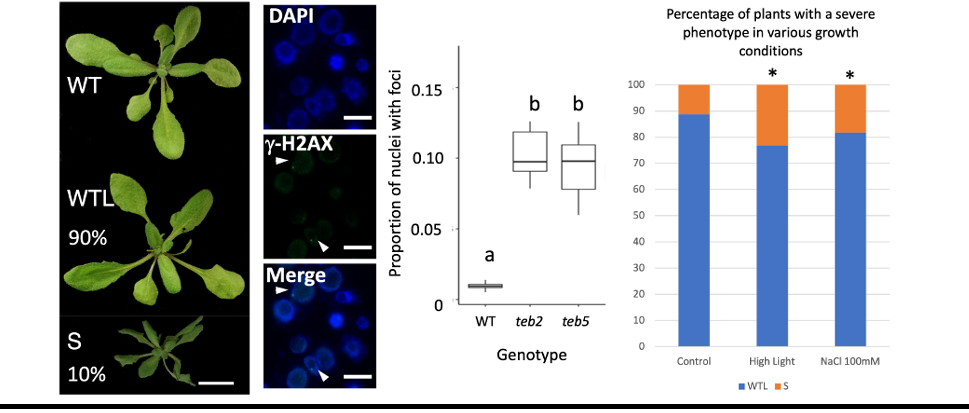Connecting DNA repair and abiotic stress tolerance in plants
Like all living organisms, plants have evolved sophisticated mechanism safeguarding their genome integrity. Due to their sessile lifestyle and their constant exposure to various adverse conditions, one could expect DNA repair mechanisms to be essential for plants’ survival. However, most mutants lacking DNA repair factors grow and develop normally. One remarkable exception is the DNA polymerase theta, involved in double-strand break repair. Mutants lacking this enzyme were called tebichi (meaning pig’s foot in japanese), due to their severe developmental defects and deformed leaves. Yet, conflicting reports describing the phenotypes of plant pol theta mutants exist in the literature. The Chromosome Dynamics group (IPS2, CNRS, Université Paris-Saclay, INRAE) therefore carefully re-examined the phenotype of these mutants. Their results published in the Plant Journal show that previously reported developmental defects actually occur in only 10% of the tebichi mutants (Figure), and are not transmitted from one generation to the next. These anomalies seem to correlate with DNA-replication associated DNA damage. Interestingly, exposure of plants to abiotic stresses such as excess light or salt increased the frequency of aberrant phenotypes in tebichi mutants, providing evidence for the crucial role of post-replicative DNA repair in the ability of plants to adjust to a fluctuating environment.

